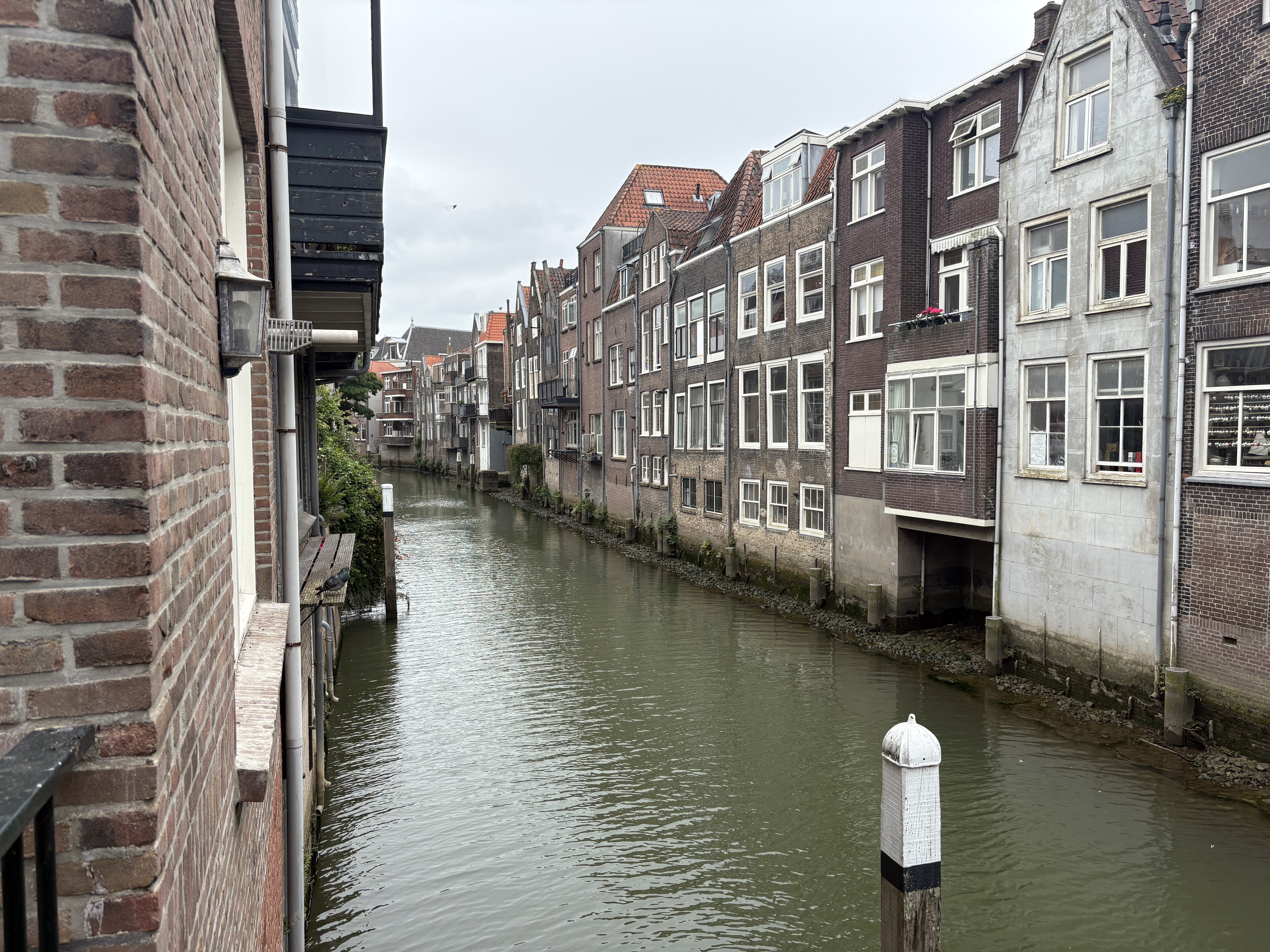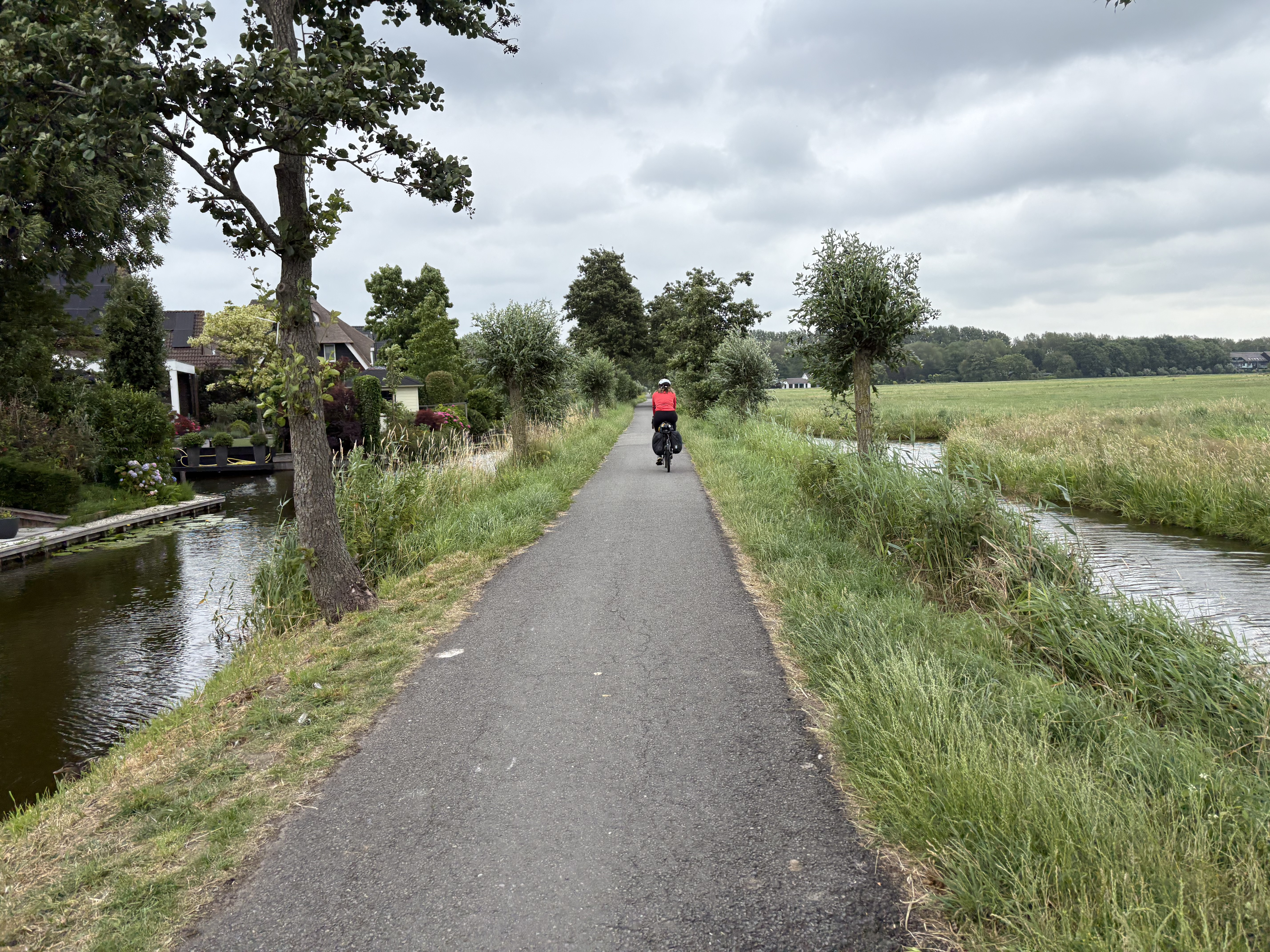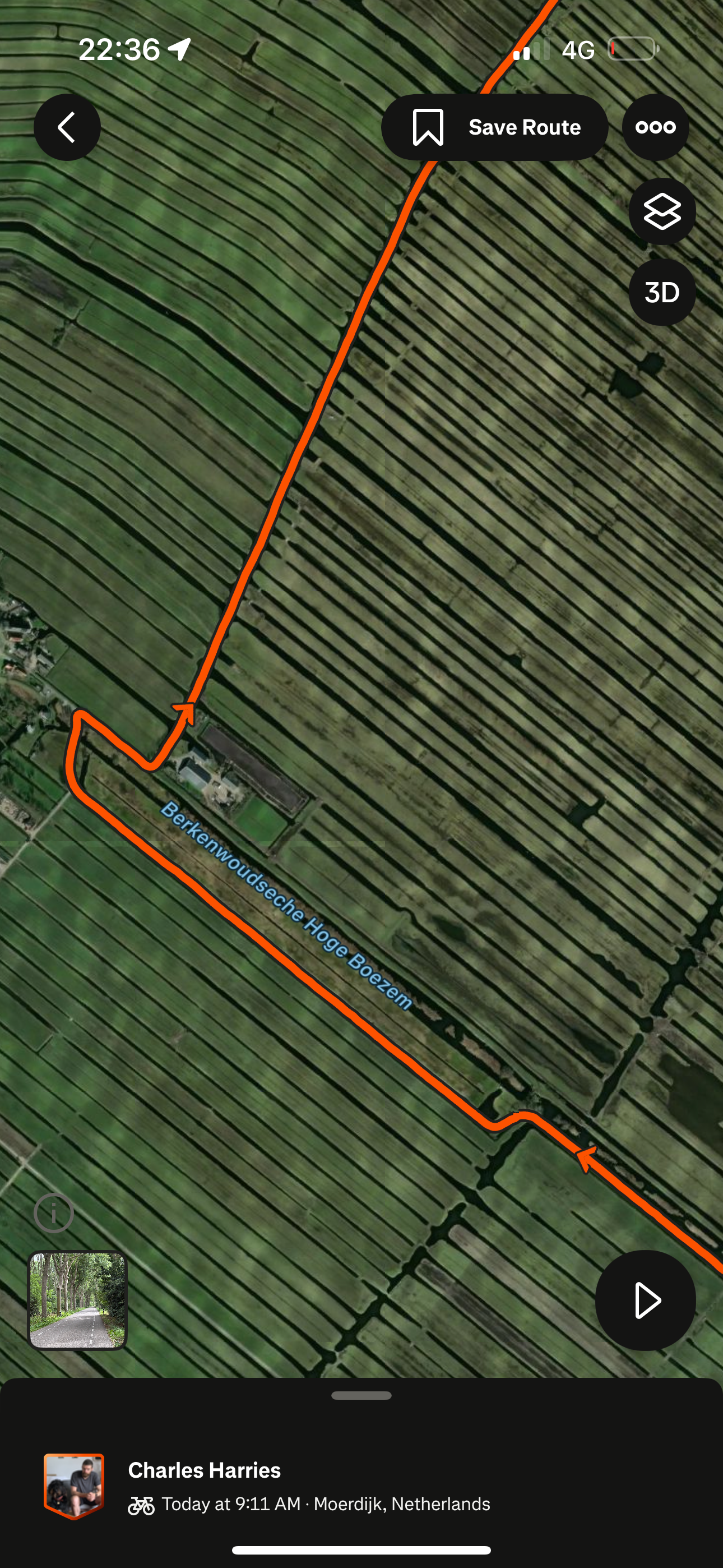C2A: Into the Real Netherlands
The area around Standaarbuiten and Moerdijk seems to be one sprawling industrial/farming estate. Long stock-straight rows of potatoes on one side, idling lorries and docking bays on the other. Just beyond, a set of bridges and new housing estates. The houses are manicured and stylish, and a few of them confusingly have thatched roofs? Canals start to wind their way amid the fields on the way out to Hollands Diep.
We’re entering the Real Netherlands.
We pass through a sleepy town called Zevenbergen and then a village called Moerdijk, where the locals mounted a resistance to the invading Nazis who sought to control the Hollands Diep estuary. On both sides of the estuary there are the remnants of lines of concrete bunkers, placed by the Germans as defense and now scrawled with graffiti about love and totally caved in with dirt and nettles. We climb a hill on the far side of the town and find, at the top of the hill, the Hollands Diep itself, broad and roaring with traffic.
This is not the first time that we find rivers at the top of hills. (The hills are, it scarcely needs to be said, actually embankments keeping the North Sea out of the country.)
We cross the Moerdijk bridge into Zuid-Holland and the cut through the fields to the south side of Dordrecht. The suburbs are quiet and green and launch us with very little fanfare into the heart of the town, where we stop at Nobel Brood for a bit of brunch. I get a kanelbulle, which transports me directly back to Sweden a couple of years ago (although it’s nowhere near the real thing). Then we board our first waterbus across the Oude Maas: a pound each saves us going back on ourselves to cross the river via bridge.

On the way out of Dordrecht we pass through a type of residential area I’ve never seen before: houses on narrow islands abutting a tiny canal. There are gardens watered by the canal and little canoes moored at wooden decks, all abutting a cyclepath frequented almost entirely by girls in baggy jeans and pensioners in wraparound sunglasses. It seems somehow so idyllic. And then we climb a hill and find another canal crossing the previous one at a higher level than all of the houses.


We turn off and make our way through Nieuw-Lekkerland to catch our second waterbus of the day across the Lek. We time it perfectly and fly out of Lekkerkerk with the wind behind us.
From here it just gets more Dutch. On both sides now are long, narrow patches of grass, sometimes with cows or sheep or goats, sometimes with a couple of lapwings or seagulls, alternating with long rows of water, only a couple of inches below the land. I don’t know how the whole thing doesn’t flood under rain. There has got to be some serieus engineering at work here.


We fly past kids coming home from school, pitying their battle against 20 kph headwinds, before rolling into Gouda and joining the rush hour bike traffic. Sitting in a queue of bikes at a traffic light makes me feel extremely smug.
Eventually we arrive at the summerhouse where we’re staying for the night. It’s rustic and cosy in perfect proportions, so we settle in. I make a quick run to the shop for groceries on my bike. I think I could make a good Dutch person, if only I could learn the language.
Next
Previous
Antwerp, the long straight road out of Belgium, entering the Netherlands, Roosendaal, and saying goodbye to good beer.